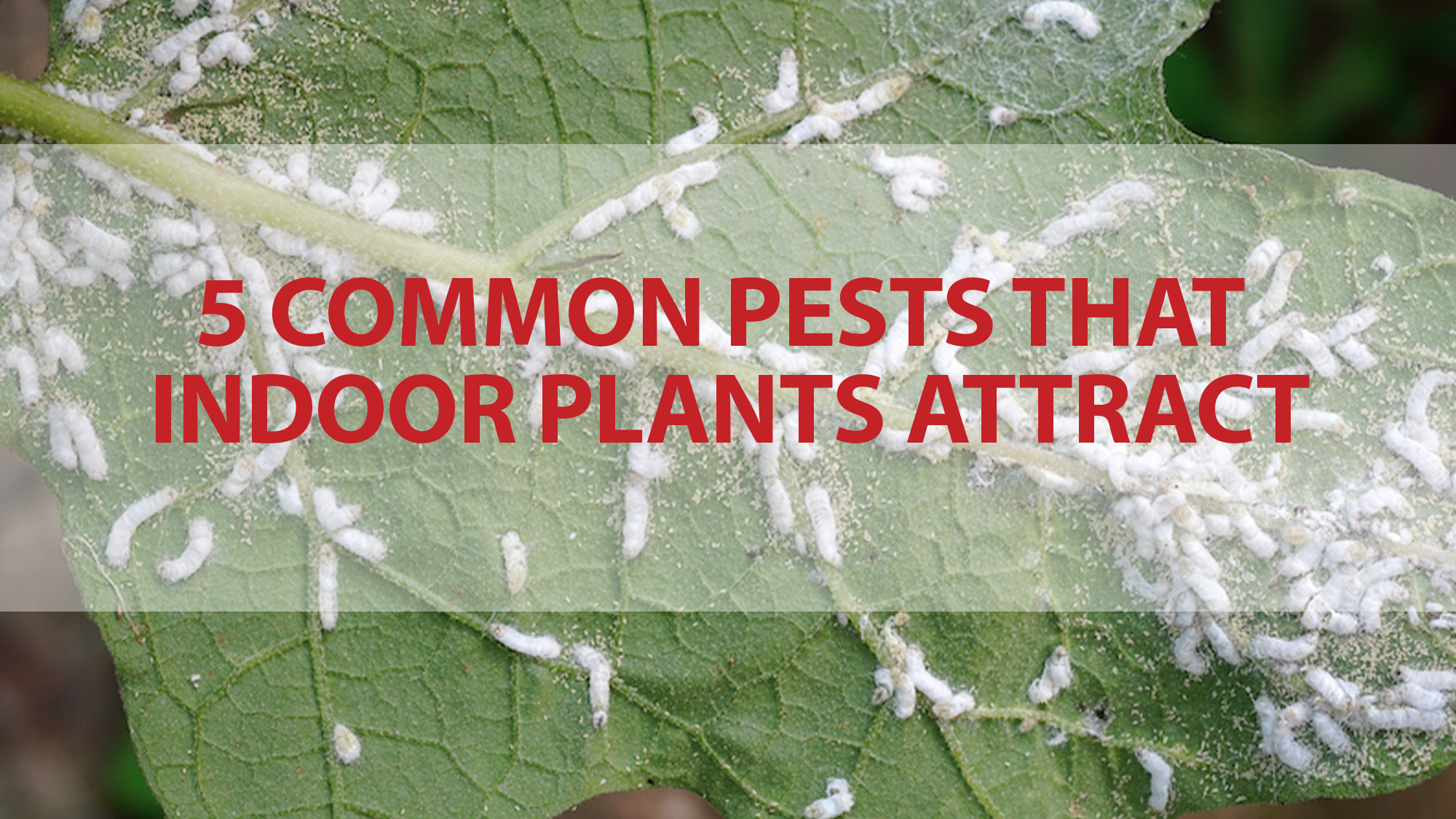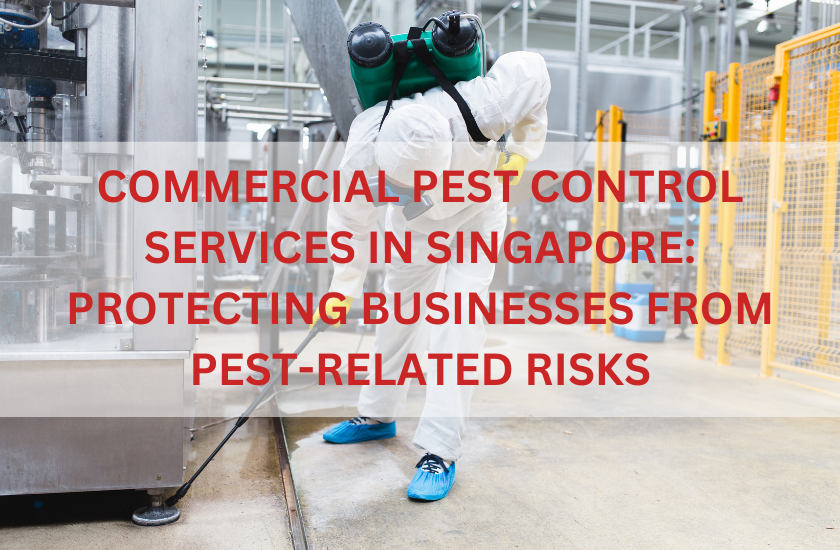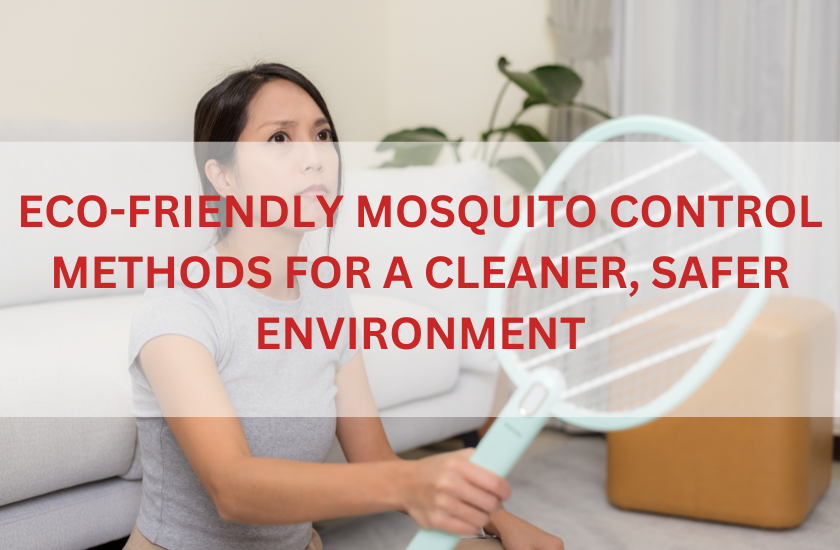Indoor plants are a great way to add some greenery to your home. However, while a fiddle leaf fig tree here and some African violets there can pleasantly improve your interiors, they come with a drawback – pests! So having plants in the house also means having to do more maintenance – especially when it comes to pest control.
Yes, just like outdoor plants attract garden pests, indoor plants can draw insects to your property and can even trigger severe pest infestations. However, you don’t have to worry since most of these insects can be eliminated using some simple techniques.
Before you can devise a pest control plan, you need to know what are some of the most common houseplant pests to look out for. In this article, we have listed five common indoor plant pests for you.
5 Common Pests Indoor Plants Attract
Spider Mites
If you have indoor plants, you will be no stranger to spider mites. These insects look like small dark specks on the leaves. The tiny insects may be difficult to spot with the naked eye, but they leave behind fine webbing. These silky white webs along your plants’ veins or leaf axis indicate spider mites.
Spider mites survive on plant fluids. So even though you might not notice the aftermath of this pest immediately, just note that any affected plants will become discoloured. For example, if you see that your indoor plant leaves are turning yellow, a close investigation of the foliage will reveal the culprit.
Figs, ivies, dracaenas, hibiscus, and Schefflera are some of their preferred hosts. Do note that mite infestations are tough to eradicate. So if your indoor plant is heavily infested, consider getting rid of it before the spider mites spread to other plants. But if you catch the pest early, you can remove infested leaves or wash the plant well with soapy water.
You may also try DIY approaches like spraying a mix of alcohol and water on the affected areas and then gently drying it with a towel. This will kill the pests without affecting the plants.
Aphids
Aphids are common houseplant pests that can exhaust your plants. The extreme stress caused by aphids can even kill the affected plant if the pest problem remains unidentified. Aphids are tiny insects that attach themselves to plants.
Aphids like to suck on plant sap. In addition to dehydrating your plants and causing the foliage to turn yellow, you might notice deformed leaves on a plant affected by these bugs.
The sap-sucking insect produces sticky honeydew, which is a telltale sign of aphids. Investigate well to check whether the leaves and stems of your indoor plants have any sticky liquid on them.
Aphids can attack a wide variety of plants. They prefer tender new growth, which will wilt and distort after aphid attacks. Even though aphids have a short life cycle of two to three weeks, their populations can grow rapidly.
Thankfully, controlling aphids is as easy as rinsing the plant with a hard spray of water using a hose. You can also use neem oil sprays or insecticidal soaps.
Mealybugs
Mealybugs love indoor plants. They are small, soft-bodied insects that have a waxy coating. White in colour, these pests are usually found in groups. They love to live on hoya, coleus, gardenia, jade, and poinsettias.
They are found on the part of indoor plants where the leaves link to the stem. Mealybugs feed slowly on the plant foliage and stunt the growth of leaves, especially new ones.
They, too, like many other indoor plant pests, produce a sticky liquid which indicates their presence. However, the dew they leave behind as a trace can cause your plant to mould. A black sooty mould grows on the dew produced by mealybugs, which can discolour, distort, and even dry the leaves.
Female mealybugs also release a white fluffy material to lay eggs on. To remove these bugs from your plants, dip a cotton swab in rubbing alcohol and use it to clean the plant. For larger, sturdy plants, you can wash the leaves by spraying water on them.
Fungus Gnats
Fungus gnats can be a genuine inconvenience. These pests can feed on the roots of indoor plants. Fungus gnats are tiny, dark flies that wander around indoor plants. Fungus gnats can attack any plant, but African violets, carnations, geraniums, poinsettias, and cyclamens are more prone to them.
Larvae of this houseplant insect develop in areas with decaying plant matter or fungus. Eventually, they will leave pathogens on the soil and damage your plant, especially its roots. It’s not just the adult fungus gnats but also the immature larvae of this species that can harm plants. Fungus gnat larvae also feed on plant roots and cause growth problems.
If you have fungus gnats, it might be a sign that you are overwatering your plants. Allow the soil surface to dry between watering. To control existing infestations, you can use yellow sticky traps to capture adult fungus gnats. The larvae can be controlled by drenching the soil with Bacillus thuringiensis serotype israelensis (Bti).
Scales
Scales are very similar to mealybugs. Found on a variety of indoor plants, scale insects come in two forms: armoured and soft scale. Both types look like tiny brown lumps on the houseplants.
The soft-scale variant is the one more commonly found. It has a waxy, powdery coating that resembles cotton. Armoured scales flaunt a hard layer made of wax and will shed their skin to protect themselves from chemical insecticides and natural predators. Staying true to the nature of plant pests, scales also feed on plant sap.
In their attempt to suck on the sap, they will pierce through branches, stems, and leaves. As a result, the affected plant can show physical signs of damage. For example, leaves become yellow and even shed when they are infested by scales. You may also notice stunted growth, wilting, and reduced vigour.
Soft-bodied scales secrete a significant amount of honeydew, whereas armoured scales do not. Not only does the dew cause moulding, but it also attracts ants. To eliminate these pests, spray insecticidal soap and neem oil on the affected plant. Alternatively, you can also scratch them off using your fingernails.
Conclusion
Plant parents know how difficult it is to keep their plants alive. Even though indoor plants seem more manageable, they also need some amount of work. So take good care of your houseplants and ensure they are free of unwanted pests.
Common indoor plant pests include spider mites, aphids, mealybugs, fungus gnats, and scales. These may be the most common insects to attack houseplants, but they are not all there is. Your plants can be susceptible to pest attacks from several other insects. This includes ants, caterpillars, leafminers, snails, thrips, and white flies.
The best way to control an infestation by any of these indoor plant pests is to prevent them from invading in the first place. Check that your home is not too humid and ensure good ventilation. Also, make sure that you are not overwatering your plants. Finally, do routine physical checks to control pests as soon as they attack your houseplants. Getting general pest control done regularly can also help.







